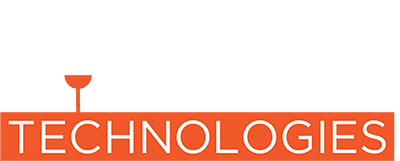Where Are Smart Technologies, IOT, and 3D Scanning Going?
There are many applications for 3D Scanning, with articles in Modern Casting, MCDP, and Elsevier that document decade of evolution to the current state of technology. So while some foundries have fully embraced scanning as a tool - overwhelmingly, I get comments that echo the sentiments of, "we're just a job shop, we can’t justify..."
Well, I call "BS" (to use foundry parlance) on that. Big foundries, have been able to do the following with 3D scanning – but job shops are mostly limited by their staff and creativity in using these applications – not their budgets. All of the following routine tasks are being performed in foundries – today. These tasks are relatively inexpensive to implement, and many can be outsourced – today.
- Pattern inspection (archiving, acceptance of new patterns, validation of quality, etc)
- Reverse engineering (patterns, ores, castings)
- Extracting a casting digitally from old tooling
- Scan to CAD Visualization and inspection / CMM / Part inspection for QC / reporting
- First article inspection
- Pre-assembly QC checks of complicated molds / cores
- Wear inspection of tooling, and in plant equipment and facilities inspections
- Setup check: go-no-go testing
- Defect quantification and feedback to simulation studies; can – adjust, retool, recast
Improvements in processing time, automation of scans and inspection reporting, software assistance in reverse engineering (reduction in labor & experience required) are growing daily. Technologies like IBM's Watson allow AI technologies and blockchain decision making to be fed scripted routines. Cloud processing can now be bought "ala cart" from IBM, AWS, and others. Many decisions that are made on the floor or by first or second line managers are completely scripted, and can be handed over to AI— today. They are just standard business processes, there is no creativity required.
AI and machine learning can currently do data mining, regression analysis on QC data, and it can script the decision making process where a process is understood. Where a process is not well understood, it can augment the value of a good process engineer by performing predictable tasks, standard calculations, and setting up decisions that need human intervention to make a decision.
In a job shop, you can now do what other industries have been doing for years:
- A customer uploads a casting, unrigged, to your website.
- An AI script accepts the part file, logs the metal, makes sure it is the size, alloy, heat, etc that you pour, evaluates thickness in heavy and thin cross sections, and runs a simulation of the cooling on an unrigged casting …..before your engineer looks at the data. Simultaneously a block chain algorithm checks your production queue, your raw materials stock, your certifications, and provides your engineer with an estimate for production time, cost, and lead time to the customer. Also, it checks the customer’s credit, to make sure that they will pay you for the job.
- Your engineer now looks only at jobs that your foundry is capable of, for qualified customers, which fit within your production spec. No labor expended yet. For those decisions that can't be predicted by AI, your engineer does some very human thinking (patternmakers may change flavor, but they will be ubiquitously necessary, forever.)
NOW. 3D SCANNING –where does that fit in? What if you already know you can accept the order, because you’ve made the part before? What if your AI could:
- Qualify web payment, existence of tooling in the warehouse, raw materials, and a match of the delivery date with your raw materials inventory and production schedule
- Agree that the simulation data predicted success before a pour happened
- Verify that the tooling delivered to the floor was the right tooling (by 3D scan match of the tooling to CAD)
- Verify that the sand mold and core package was properly assembled, log pouring temp, and batch chemistry, and alert you if the core wash was over or under applied, or had drips...
- Verify that the casting met as-poured accuracy and surface defect criteria.
- Correlate any NDT data, CT data, tensile bars, or other QC data, and track everything by QR codes that were laser engraved into the castings during machining.
That cute little 3D scanning device that your 20 something engineer has been waving around is your gateway into the next century of manufacturing smarts. All of the tools and decision making tools mentioned in this article are available, and many have been in real world use for a decade or more, in foundries. Connecting the scanner to your quality DB, and getting some AI to connect your front end to the pouring room floor won’t replace decision making in the near future, but it can augment the capabilities of your best decision makers, and give them the diagnostics to track everything related to making castings. 3D scanners can be a standard "extra set of eyes" that validate production processes. It’s time to do a tech roadmap for your foundry!

